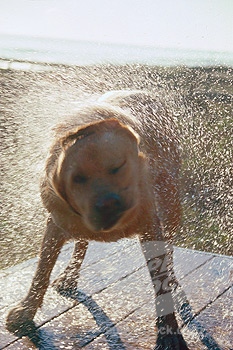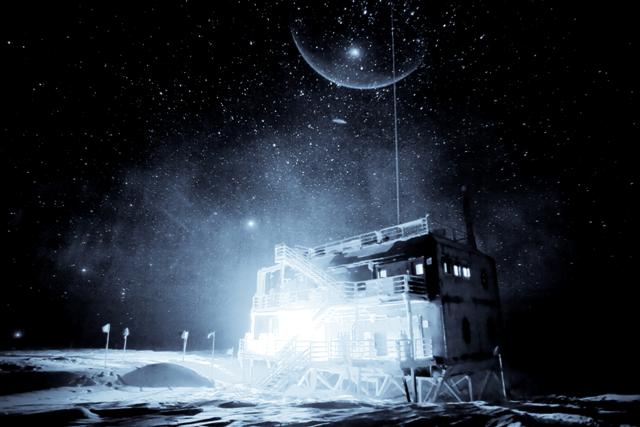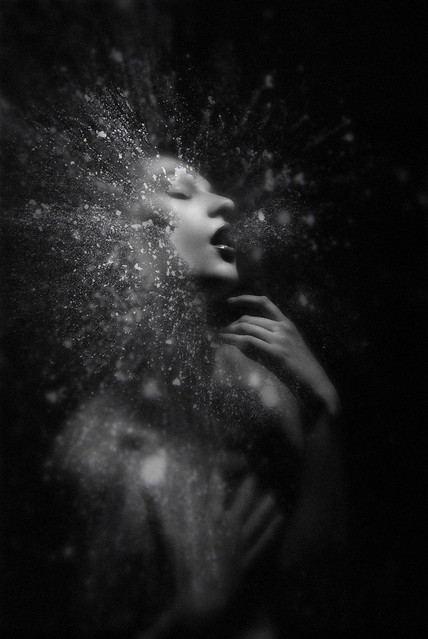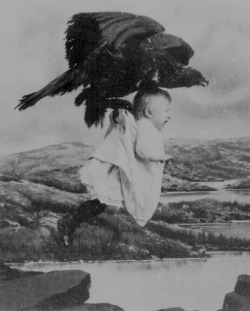Notes from a four-part Pranayama workshop held in February 2012 at the Centre of Gravity. Led by Michael Stone and Grant Hutchinson.
Dog
Have you ever seen a dog leave the ocean? What is the first thing it does, particularly if it’s not your dog? It comes on over and shakes off all that water. This is what the nervous system does sometimes during/after pranayama, it throws off electricity, in an effort to regain equilibrium.

If your arms ache from holding them up (so you can pinch your nostrils closed in nadi shodhana), try doing downward facing dog and forearm stand. These asanas create the patterns necessary for inner arm rotation and strength.
Order
The Hatha Yoga Pradipika suggests starting with asana, then doing prayanama, then sitting practice. A process of concentration slowly coming to stillness. But why don’t you play with the order? What works for you? If it’s keeping you up at night, then do pranayama in the morning. Some people find pranayama practice stimulating, for them it’s best to practice in the morning, for instance, before doing sitting practice. Others find pranayama grounding, then it’s fine to practice at night. It depends on who you are. Find a customized form, an order that works for you.
Crow
Vishita is a great yogi, the Brahmin’s yogi. And he’s trying to go deeper into his practice. In order to do this he finds a crow – in mythology they are the creatures that remember everything. He asks the crow to teach him pranayama. Who knows pranayama better than a crow with perfect memory? The crow teaches him about prana and apana. The breath is weather, it’s wind. Just as any aspiring yogi becomes devoted to their guru, the crow is very loyal, very devoted to her breath.

The Yoga Vasistha by Vivekenanda (The crow speaks)
“That energy which thus vibrates in the heart-lotus is known as prana; it enables the eyes to see, the skin to feel, the mouth to speak, the food to be digested, and it performs all the functions in the body. It has two different roles, one above, and one below, and is then known as prana and apana respectively. I am devoted to them; they are free from fatigue, shine like the sun and the moon in the heart, are like the cartwheels of the mind which is the guardian of the city known as the body, and are the favourite horses of the king known as ego-sense. Being devoted to them I live as in deep sleep, forever in homogeneous consciousness.”
Higher and Lower
Prana (higher) and apana (lower) is the inhale and exhale of the natural world. It’s in us and it’s outside of us. Prana is the sun, apana is the moon. “Prana is constantly in motion inside and outside the body; prana is that vital air which is established in the upper part. Apana is similarly and constantly in motion inside and outside the body, but it dwells in the lower part.
The efflux of the vital force centered in the heart-lotus, of its own accord and without effort, is known as recaka or exhalation. The contact with the source of the pranic force which is located downward on the length of twelve ‘fingers,’ in the heart-lotus, is known as puraka or inhalation.
When the apana has ceased to move and when the prana does not arise and move out of the heart (and till these begin to happen), it is known as kumbhaka (retention as of a filled pot). There are said to be three points for the recaka, kumbhaka and puraka: (1) outside (the nose); (2) from below the place known as dvadasanta (above or in front of the forehead at a distance of twelve fingers); (3) the source of prana (heart-lotus).
Pray, listen to the natural and effortless movement of the life-force at all times. The movement of the vital air up to the extent of 12 fingers from oneself constitutes recaka. That state in which the apana-force remains in the dvadasanta, like the un-fashioned pot in the potter’s clay, should be known as external–kumbhaka.
When the outgoing air moves up to the tip of the nose, it is known as recaka (exhalation). When it moves up the extent of the dvadasanta it is known as external-recaka (exhalation). When the movement of prana has ceased outside itself and as long as the apana does not rise, they call it external-kumbhaka (retention). When, however, the apana flows inwards, without the prana rising within, they call it internal-kumbhaka (retention). When the apana rises in the dvadasanta and attains internal expansion, it is known as internal puraka (inhalation). He who knows these kumbhaka is not born again.
Whether one is going or standing, awake or asleep, these vital airs – which are naturally restless – are restrained by these practices. The whatever he does or eats, he who knows these kumbhaka is not the doer of these actions. In a very few days he attains the supreme state. He who practices these kumbhaka is not attracted by external objects. They who are endowed with this vision – whether they are stationary or moving (active or inactive) – are not bound; they have attained that which is worthy of being attained.
When the impurity of one’s heart and mind have been destroyed by thus being devoted to prana and apana, one is freed from delusion, attains inner awakening and rests in one’s own self even while doing whatever has to be done.

Lord, prana arises in the lotus of the heart and terminates at a distance of 12 finger breadths outside the body. Apana arises in the dvadasanta (12 finger-breadths from the body) and terminates in the lotus of the heart. Thus apana arises where prana terminates. Prana is like a flame and it goes up and out; apana is like water, and it goes down toward the heart-lotus.
Apana is the moon which protects the body from outside; prana is like the sun or the fire and promotes the body’s internal welfare. Prana generates heat in the heart-space every moment, and after producing this heat it generates heat in the space in front of the face. Apana, which is the moon, nourishes the space in front of the face, and then it nourishes the space in the heart.
If one is able to reach that space where the apana unites with the prana, he does not grieve anymore nor is he born again.
In fact, it is only prana that undergoes a modification and appears as prana, after abandoning its burning heat. And the same prana, having abandoned the coolness of the moon, gains its nature as the purifying fire of the sun. The wise ones inquire into the nature of prana as log as it does not abandon its solar nature to become lunar. One who knows the truth concerning the rising and the setting of the sun and the moon in one’s own heart, is not born again. He who sees the Lord, the sun, in one’s heart, is not born again. He who sees the Lord, the sun, in one’s heart, sees the truth.
In order to attain perfection one does not prevent nor protect external darkness, but one strives to destroy the darkness of ignorance in the heart. When the external darkness goes, one is able to see the world; but when the darkness of ignorance in the heart is dispelled, there arises self-knowledge. Hence, once should strive to behold the prana and the apana whose knowledge bestows liberation.

Apana terminates in the heart where prana arises. Where prana is born, there apana perishes; where apana takes birth, the prana ceases. When prana has ceased to move and when apana takes birth there prana ceases. When prana has ceased to move and when apana is about to rise, one experiences external kumbhaka (retention); rooted in this one does not grieve any more. When apana has ceased to move and when prana is arisen just a little, one experiences internal kumbhaka (retention); rooted in this one does not grieve any more.
If one practices kumbhaka (suspension of breath) after exhaling the prana to a distance farther from where the apana rises (the 12 finger breadth distance), he is not subject to sorrow anymore. Or, if one is able to see the space within oneself where the inhaled breath turns into the impulse for exhalation, he is not born again. By seeing where the prana and apana terminate their motions, and by holding fast to that state of peace, one is not subject to sorrow again.
If one keenly observes the place and the exact movement at which the prana is consumed by the apana, he does not grieve. Or, if one keenly observes the place and the exact moment t which apana is consumed by prana, his mind does not rise gain. Therefore, behold that place and that moment at which prana is consumed by apana and apana is consumed by prana inside and outside the body. For that precise moment at which the prana has ceased to move, there arises a kumbhaka which is effortless; the wise regard that as an important state. When there is effortless suspension of the breath, it is the supreme state. This is the self, it is pure infinite consciousness. He who reaches this does not grieve.
I contemplate that infinite consciousness which is the indwelling presence in the prana, but which is neither with prana nor other than prana. I contemplate the infinite consciousness which is the indwelling presence of prana, but which is neither with apana nor other than apana. That which is after the prana and the apana have ceased to be and which is in the middle between prana and apana – I contemplate that infinite consciousness. I contemplate that consciousness which is the prana of prana, which is the life of life, which alone is responsible for the preservation of the body; which is the mind of the mind, the intelligence in the intellect, the reality in the ego-sense. I salute that consciousness in which all things abide, from which they emerge, which is all and everywhere, and which is all in all and eternal; which is the purifier of all and whose vision is most meritorious. I salute that consciousness in which prana ceases to move but apana does not arise, and which is the energy in both prana and apana, and which enables the senses to function. I salute the consciousness which is, in fact, the essence of the internal and external kumbhaka, which is the only goal of the contemplation of prana, which enables the prana to function and which is the cause of all causes. I take refuge in that supreme being.
By the regular and systematic practice of pranayama as described by me, I have gained the state of purity, and I am not disturbed even when Mount Meru (or the North Pole) is shaken. This state of Samadhi or total equanimity is not lost whether I am walking or standing, whether I am awake, asleep or dreaming. In all conditions of life I rest in the self and with the self, with my vision turned upon itself, whatever changes may take place in the world or in the environment. Thus I have lived right from the time of the previous cosmic dissolution.

I do not contemplate either the past or the future; my attention is constantly directed to the present. I do what has to be done in the present, without thinking of the results. Without considerations of being or non-being, desirable or undesirable, I remain in the self, hence I am happy, healthy and free from illness.
My state is the fruit of contemplation of the moment of union of the prana and the apana (when the self is revealed). I do not entertain vain notions like, “I have obtained this, and I shall gain that, too.” I neither praise nor censure anyone (neither myself nor others) nor anything at any time; my mind dos not exult on gaining what is considered good, nor does it becomes depressed on obtaining what is considered evil; hence my state of happiness and health, I embrace the supreme renunciation, having renounced even the desire to live; thus my mind does not entertain cravings, but is peaceful and balanced. I behold the one common substratrum in all things (a piece of wood, a beautiful woman, a mountain, a blade of grass, ice, fire and space) and I am not worried by thoughts like, “What shall I do now?” or “What shall I get tomorrow morning?” I am not bothered by thoughts of old age and death, or by longing for happiness, nor do I regard some as “mine” and others as “not-mine.” I know that everything in all times, everywhere, is but the one cosmic consciousness. These are the secrets of my state of happiness and health.”
Now
These musings on prana and apana ask us: can we be in our experience, can we disappear into our experience? Can we be the breath feeling the breath, so that we’re not even giving birth to a self having an experience of the breath. We align ourselves with this moment where we’re not leaning forward into the future or back into the past. So we can unfold into the spectrum of whatever is happening in this moment. And this includes the not-so-good, the unpleasant, the difficult. The practice isn’t about feeling good, it’s about opening to experience as it happens, again and again. The practice isn’t about feeling good, it’s about freedom.
Ha-tha Yoga
Ha: sun energy, the inhale. Tha: moon energy, the exhale. The practice of hatha yoga gestures towards a resolution of seemingly contrary elements. In this practice, the distinctions between inhale and exhale begin to fall away, as we enter the central column, as we enter this moment.

Pause
There’s a natural pause at the top of the breath, it’s called kumbhaka. There’s a natural pause at the bottom of the breath, it’s called kumbhaka. When the breath stops at this place, when there’s an effortless pause, then time stops. The mind’s normal world constructing thoughts cease, the division between us and our experience stops. We’ve ceased to objectify even the breath. The feeling of breathing in and out dissolves. “For that precise moment at which the prana has ceased to move, there arises a kumbhaka which is effortless; the wise regard that as an important state. When there is effortless suspension of the breath, it is the supreme state. This is the self, it is pure infinite consciousness. He who reaches this does not grieve.”
Benefit
At the end of their discussion the yogi asks the crow: what’s the benefit of doing pranayama practice? Why all this concentrated breathing? And the crow answers: I don’t worry about pieces of wood, beautiful women, ice, fire and space. I’m not bothered by thoughts of old age and death, or by thoughts of what happened or what’s going to happen.
Prana and apana describe energetic patterns of breathing practice. They are a better description than inhaling and exhaling. Hopefully you can take this with you from the class, along with a sense of humour.
Exercise
Try sucking your thumb, and pulse a little bit. At the top of the inhale while sucking your thumb the scalene muscles in the neck turn on and the soft palette rises. If you hold your abdominal wall then your scalenes won’t turn on. It’s important to keep the belly soft. During pranayama we can feel where tension resides in the body, where we store it up and hold it, where our sensations are impeded.
Not Feeling
There are two ways of not feeling what’s happening in the body. The first is because there’s already tension in that place. For instance many yogis have learned to keep their pelvic floor turned on, but in order to feel the pelvic floor you have to let go of that tension first. Often it’s turned on too much. The second way of not feeling what’s happening is when we try too hard. We cover the feeling of what’s happening, for example, the lifting of the soft palette. The movements of the subtle body are subtle.
The pubic bone and tail bone are evenly dropping. This creates a balance between the pranic and apanic pattern. If they aren’t even then it’s hard to feel the subtle pattern.
When we harden the mouth, when we clench the jaw: we’ve made up our mind. We’ve decided. Instead you fall back into the soft palette where we can appreciate the pattern of the pranic and apanic energy. As we continue to study and feel the subtle energies, during asana practice for example, striking a yoga pose or two, then when we come to sit we have a wider understanding of how these energies work in the body. In asana practice we can observe these pranic and apanic patterns working in a body that is bending and folding into all kinds of postures and positions. We can appreciate the aesthetic experience. We can offer prana and apana to each other, as a devotion and dedication, as the heart of our practice. When these energies are unfolding we don’t need to tamper with them. This is my life right now unfolding through this inhale, unfolding through this exhale.

Compassion
This is kundalini yoga, it’s uncoiling the coil. Kundalini is what we call prana when it comes into the central channel. It’s dramatic but it’s nothing special. And let’s be careful about language. Words. So many people have read Autobiography of a Yogi that they think the practice is about having spine tingling experiences. Kundalini is a metaphor for the present moment. The central axis or middle path is about being open in the present moment, it’s not about trying to make something happen. It’s about opening to what is happening, not trying to make something happen.
The goal of the practice is compassion. The soft palette is the seat of compassion because we’re allowing our experience to be what it is, instead of wanting it to be something else.
